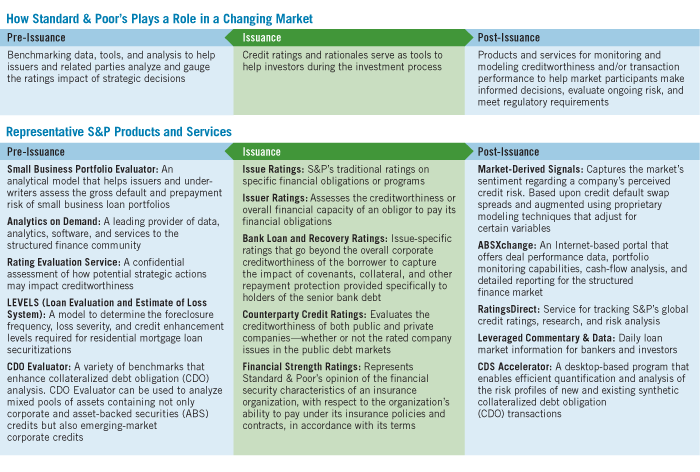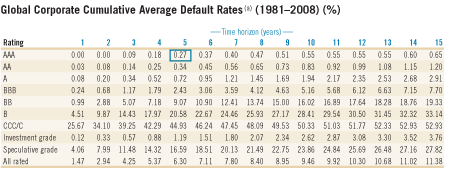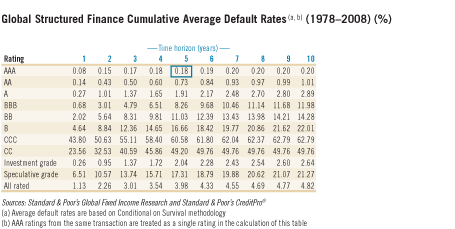
S&P Credit Market Services:
Expanding World of S&P Ratings
From pre-issuance to post-issuance, financial decision makers are utilizing a growing range of S&P products and services to identify, measure, and manage credit risk. These S&P offerings are creating additional growth opportunities.
S&P rated over $3 trillion in new debt and published more than 1 million new and revised ratings in 2008
S&P's Rating Track Record: Meeting the Test of Time
What is an S&P credit rating? It is an opinion about credit risk–the ability and willingness of an issuer to meet its financial obligations in full and on time. Credit ratings also indicate credit quality–the relative likelihood that an issue may default. S&P’s global ratings scale provides a benchmark for evaluating the relative credit risk of issuers and issues worldwide.
How S&P ratings perform: The tables
(at right) show the default rates
experienced for each rating category
over many years. For example, the
5-year cumulative default rate for a
corporate bond rated AAA has been 0.27%, or less than three defaults
for every 1,000 ratings. The 5-year
cumulative default rate for AAA-rated structured finance issues
has been
0.18%, or less than 2 per 1,000. The tables underscore another
key point:
Over time, the higher the S&P rating,
the fewer defaults have been experienced.


